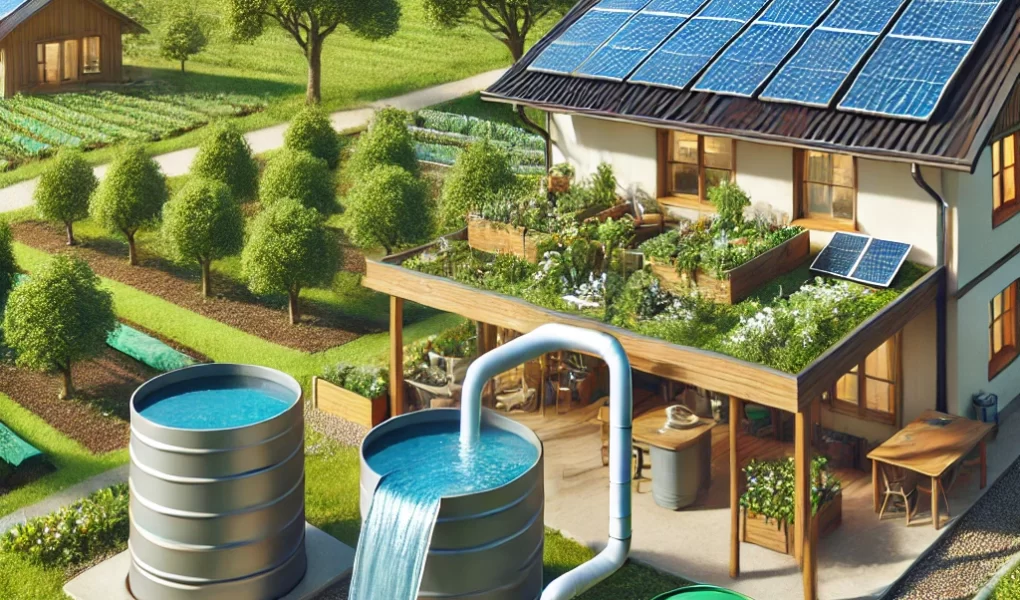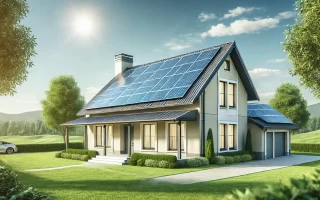Why Rainwater Harvesting is Essential for Sustainable Living
Water is one of our most valuable resources, yet in many parts of the world, it is becoming increasingly scarce. Rainwater harvesting offers a practical, sustainable solution to capture and store free, natural water for everyday use—whether for irrigation, household needs, or even drinking (with proper filtration).
For those looking to live off-grid, reduce their water bills, or create a self-sustaining homestead, rainwater collection is a game-changer. By harvesting rainwater, you can make the most of what nature provides while reducing your dependence on municipal water supplies.
In this post, we’ll explore:
✅ What is rainwater harvesting?
✅ How it benefits your home, garden, and the environment
✅ The best rainwater collection methods
✅ How to set up your own system for irrigation and household use
What is Rainwater Harvesting?
Rainwater harvesting is the process of collecting, storing, and using rainwater that falls on rooftops, landscapes, and other surfaces. Instead of letting it run off into storm drains, the water is captured for irrigation, drinking (if properly filtered), and household use.
Types of Rainwater Harvesting Systems
💧 Rooftop Rainwater Collection: Water is channeled from roofs into storage tanks or barrels for future use.
💧 Surface Runoff Collection: Water is captured from driveways, patios, or land surfaces and redirected to reservoirs or underground storage.
💧 In-Ground Water Catchment: Systems such as swales or retention basins slow and absorb rainwater into the soil for landscape irrigation and groundwater replenishment.
The Benefits of Rainwater Harvesting
Harvesting rainwater isn’t just about saving water—it’s about building resilience, reducing costs, and living sustainably.
1. Reduces Water Bills 💰
- Rainwater is 100% free, and by collecting and using it, you can reduce reliance on city water.
- Homeowners can cut irrigation costs by 50-100%, especially in dry climates.
2. Provides a Backup Water Supply 🚰
- In drought-prone areas, rainwater storage ensures you have water even during shortages.
- Off-grid homesteads can use it as their primary water source for drinking (when properly filtered).
3. Supports Healthier Gardens & Crops 🌱
- Rainwater is naturally soft and free of chlorine, salts, and chemicals—ideal for plant growth.
- Helps regenerate soil and supports permaculture principles.
4. Prevents Soil Erosion & Flooding 🌍
- Slows down runoff that would otherwise erode soil and overwhelm drainage systems.
- Helps recharge groundwater, benefiting the environment.
5. Reduces Strain on Municipal Water Systems 🏙️
- Reduces demand on public water supplies, making cities more water-efficient.
- In times of drought, every gallon of harvested rainwater counts!
How to Set Up a Rainwater Harvesting System
Setting up a rainwater collection system is easier than you think! Whether you’re collecting water for gardening, washing, or household use, here’s how to get started.
Step 1: Choose Your Collection Surface
- Roofs are the best option—metal, tile, and non-toxic materials work best.
- Avoid surfaces with lead-based paints or chemicals that could contaminate water.
Step 2: Install Gutters & Downspouts
- Direct rainfall from the roof into a storage system using clean gutters and downspouts.
- Use leaf screens to prevent debris from entering the system.
Step 3: Select a Storage Tank or Barrel
- Basic Option: Rain barrels (50–100 gallons) for small gardens.
- Intermediate Option: IBC totes (250–1,000 gallons) for household and irrigation use.
- Advanced Option: Underground cisterns (1,000+ gallons) for long-term storage.
Step 4: Add a First Flush Diverter
- This device diverts the first dirty rainwater runoff, ensuring cleaner storage water.
Step 5: Filtration & Treatment (For Household Use)
- Basic filtration (sand, gravel, charcoal) removes large debris.
- Advanced filters (UV treatment, carbon filters) make water safe for drinking.
Using Harvested Rainwater for Irrigation & Household Use
Once collected, rainwater can be used in many ways:
🌿 Irrigation: Use rainwater for gardens, fruit trees, and landscaping. A gravity-fed drip system ensures efficient watering.
🚿 Household Use: Filtered rainwater can be used for laundry, dishwashing, and bathing.
🥤 Drinking Water: With proper filtration, harvested rainwater is safe to drink.
🚽 Toilet Flushing & Cleaning: Save hundreds of gallons per month by switching to rainwater.
Frequently Asked Questions
1. Is rainwater safe to drink?
Yes! But it requires proper filtration and treatment. Basic filters remove dirt, while UV and carbon filters purify water for drinking.
2. How much rainwater can I collect?
A simple formula: 1 inch of rain on 1,000 sq ft of roof = 623 gallons of water! Even a light drizzle can quickly fill rain barrels.
3. Do I need a permit?
Some states require permits for large rainwater systems. Check local regulations before installing a system.
4. Can I use rainwater in winter?
Yes! Insulated tanks and underground storage prevent freezing, allowing year-round use.
Start Harvesting Rainwater & Reduce Your Water Footprint!
Rainwater harvesting is an easy, cost-effective, and eco-friendly way to conserve water and become more self-sufficient.
Want to see how it’s done?
📌 Follow us on Instagram for DIY rainwater collection projects!
🎥 Subscribe to our YouTube channel for step-by-step guides on off-grid water systems!
💬 Join our private Facebook group to connect with others building sustainable homes!
🌍 Water is precious—let’s capture every drop! 💧
Let’s build a Better World Blueprint—one rain barrel at a time! 🌱🌎




